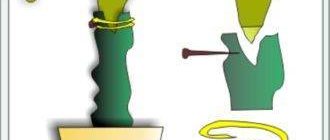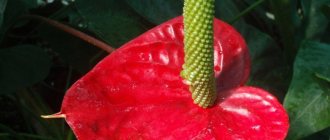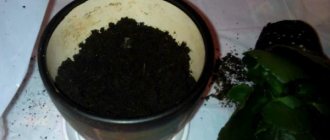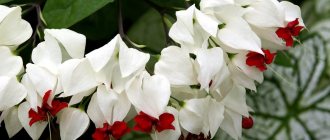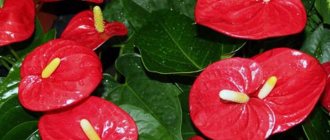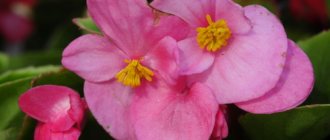Geranium (pelargonium) is a popular house flower, which is quite often found in the collections of gardeners. This tropical plant is unpretentious in care, and if suitable conditions are created, it can delight its owner with surprisingly lush and bright ball-shaped inflorescences for up to 6 months in a row.
But, as practice shows, it is the flowering of pelargoniums that often becomes the main problem even for experienced breeders. Often, geranium stretches upward abundantly, actively produces new succulent leaves and forms a lush crown, but does not bloom. Naturally, every plant owner faced with such a problem is faced with the question of how to make geraniums bloom at home. Before answering this question, it is necessary to understand the reasons that prevent the flowering process from occurring.
Geranium flowering conditions
Pelargonium is unpretentious to the conditions of detention. But in order to achieve abundant flowering, you need to follow a number of simple rules.
Temperature
The most comfortable temperature for geraniums is room temperature. That is, 20-23 degrees.
Air humidity
The plant does not like humid air in the room, so keep it in a dry room. If there is high humidity in your house or apartment, then place the flower by the window.
Lighting
Geranium on a windowsill on the sunny side
Geranium loves warmth and light. But at the same time, you need to take care to protect the plant from direct sunlight. Pelargonium will not “burn” from the midday heat, but the flowers will fade faster.
Therefore, on the windowsill, do not place the geranium close to the glass, but move it a little further to the edge.
Location
Geranium feels best on window sills, balconies and verandas. Some gardeners even plant flowers in the garden and flower beds for the summer.
Soil features
Geranium can be planted in neutral, acidic and slightly acidic soil. The plant is generally not picky about soil. The main thing is that the soil is loose. In addition, you must take care of drainage so that moisture does not accumulate in the pot.
Pot
Geraniums need to be grown in a small pot. If the flower has a lot of space, it will gain green and root mass. Geraniums should be crowded.
CLUE.
If you have a large pot empty, then plant several plants in it at once.
When does geranium produce inflorescences and how long does this period last?
Proper care allows you to admire the attractive buds of the plant. Depending on the variety, geranium can bloom at different times of the year:
- Forest and large-rhizome geraniums bloom in mid-May. The inflorescences of these plants retain their color for 30-40 days.
- Georgian and small-stamen geraniums begin to produce inflorescences in mid-June. Their flowering period is up to 40 days.
- Dalmatian, marsh and meadow geraniums bloom in mid-July. Flowering duration is only 20 days.
- Ash and Renard's geraniums bloom in midsummer. Flowering duration is 30 days.
Why doesn't geranium bloom?
At home, geranium can bloom up to 6 times a season. With proper care, the crop regularly forms buds and retains its color for 20 days.
Duration of plant flowering
Geranium flowering conditions
In order for the plant to form buds, it is important to observe the following care features:
- In the house, geraniums should be on the south side. The plant requires a lot of sunlight. It is necessary to choose an open place on the site. A sufficient amount of sun promotes the appearance of large leaves and abundant flowering.
- In the house, the plant should not be placed near heating devices. Because of this, the lower leaves of the bush turn yellow, and the flower stalks form small buds.
- The culture does not tolerate clay types of soil. It is necessary to give preference to loose soil that allows air to pass through well. If garden soil is used, it must be mixed with river sand.
- To form inflorescences, it is necessary to regularly fertilize. For geraniums, complex mineral fertilizers are used, which not only promote the appearance of inflorescences, but also prolong the flowering period of the plant.
- Maintaining a certain temperature. The plant begins to bloom only if the air temperature exceeds 12 degrees.
- For flowering to occur, the house must be draft-free. Otherwise, the culture may die.
- Geraniums need to be watered regularly and abundantly. Only in this case will the flower stalks be able to stretch out and form buds. Even in winter, when the indoor air is dry, it is not advisable to spray the leaves. This may result in a reduced flowering period.
- The flower pot should be quite spacious, since the plant has a well-developed root system. Timely replanting will stimulate the formation of inflorescences.
Conditions for growth
Geranium can be attacked by pests, so it is necessary to regularly inspect the leaves of the crop. When the first symptoms appear, it is recommended to treat the plant with special means and separate it from other flowers. Most often, aphids appear on crops. These insects feed on plant sap, which leads to weak shoots.
Important! Frequently replanting a plant can damage the root system, so when choosing a pot, you need to take into account the rapid growth of roots.
Why doesn't it bloom at home?
There are several main reasons why your pelargonium does not bloom.
Geranium bush without flowers
- Insufficient amount of fertilizer. Geraniums need to be fed once every 7-10 days.
- Incorrect feeding. The plant loves potassium fertilizers and does not tolerate organic matter well.
- Excessive watering. It is very important not to flood the flower. Otherwise its roots will rot.
- Lots of free space. In order for a plant to bloom, it needs to create close conditions.
- Too many neighbors. Geranium tolerates “cohabitation” well with other flowers, but it’s still not worth creating a whole flower garden in one pot.
- You forgot about pruning in the spring. Before the start of the new season, the old flower must be thinned out well and no more than 2 shoots should be left.
- Little light. Geranium is a light-loving plant. Therefore, it needs to be provided with a sufficient amount of sun. But it is advisable not to expose the plant to direct sunlight.
- Unsuitable temperature. If the place where the geranium is located is too cold or too hot, the plant may not bloom.
- The plant is too old. If your flower is many years old, then the reason may be the age of the pelargonium.
- It's winter outside. In winter, geranium prefers to rest. If it’s frosty outside, then just let the flower rest until spring.
Why are only leaves thrown away?
There are several reasons why royal geraniums do not bloom at home, but only increase their green mass.
The reason may lie in an incorrectly selected pot.
If the root system does not have enough space to grow, it will devote all its energy to forming leaves rather than flowers.
Also, the reason may lie in incorrectly selected nutrients or failure to comply with the schedule for their application. If you frequently feed the crop, it will increase its green mass.
Lack of flowering may be due to lack of nutrients or too much water in the soil. The frequency of watering should vary depending on the time of year. More often in summer, and less often in autumn and winter. Geraniums may not bloom if the shoots are not trimmed. They will take nutrients from the roots.
Another common reason for the lack of flowering is damage to the root system by diseases and pests. Due to lack of light or low air temperature, geranium will grow green mass instead of flowers. If you do not transplant the geranium into a larger pot in time, there may be no flowering.
What should I do to make it bloom?
Sometimes it happens that even with proper care, geraniums do not bloom. In this case, you need to take extreme measures. Their essence is to create the most unsuitable conditions for the plant.
Here are some possible methods:
- Trim the bushes even further. Leave only 2 eyes on one shoot.
- Place the geranium in the cold and reduce the amount of water.
- Replant the plant.
- Increase the concentration of iodine in the supplement.
Trimmed geranium bushes
No pruning or replanting
Geraniums require timely replanting and pruning. If these procedures are carried out at the wrong time or ignored, then the pelargonium will not produce buds in due time and will only stretch out.
As soon as the plant begins to stretch, you should immediately trim off excess branches and leaves, forming a neat bush.
Pelargonium fragrant
Lemon geranium also blooms modestly and rarely. With proper care, flowers appear only in summer.
When growing these varieties of pelargonium, you should not expect abundant flowering.
Most often, geraniums do not bloom due to improper or insufficient care. Providing all the conditions necessary for the plant in most cases helps to achieve the appearance of bright flowers in pelargonium.
Care after flowering
If your pelargonium blooms only in the warm season, then you need to know a few simple rules for caring for the plant after flowering.
- If you took a flower pot outside for the summer, then do not rush to put it back. Keep your pet in quarantine for a whole month to make sure that he is not sick and will not infect his neighbors.
- During the dormant period, geraniums should be kept cool (temperature about 15 degrees).
- The frequency of watering also needs to be reduced.
- Do not keep the flower in a warm, humid room.
Video: how to make geraniums bloom
Pelargonium is an easy-to-care flower. Normally, it produces many flower stalks, which replace each other throughout the entire growing season. If the plant does not bloom, you should pay attention to the quality of the soil, adherence to the rules of care and stimulate flowering with the help of pruning, proper feeding, moderate watering and constant loosening.
- Author: arina16
Rate this article:
- 5
- 4
- 3
- 2
- 1
(8 votes, average: 3.8 out of 5)
Share with your friends!
How to water?
Pelargonium does not like a lot of water. Make sure there is no excess moisture in the soil. Therefore, be sure to provide the plant with good drainage. Water from a regular plastic bottle along the walls of the pot. This will prevent water from getting on the leaves and stems.
The water should be at room temperature and not hard. To do this, you can filter the liquid or let it settle.
The frequency of watering geraniums depends on the season:
- Spring . You need to water the flower when the soil dries out by about 10 mm. Check the humidity with your finger, toothpick or pencil. If all plant care conditions are met, the soil will dry out in about 3 days .
- In summer, pelargonium's need for moisture increases. You can even water it daily . The main thing is to be careful not to “flood” the geranium. Remember that the soil must be dry before watering.
- In autumn, geraniums need to be watered less often than in summer. After flowering ends, the interval between waterings should be 2-3 days . This will prevent the plant roots from drying out.
- The dormant period for geranium begins in late autumn , at the end of October - beginning of November with the arrival of the first cold weather. If there is a thaw outside, then you need to water the plant at intervals of 12-14 days. If there is severe frost outside, then moisten the soil every 10-12 days.
“Wintering” lasts until the beginning of spring.
IMPORTANT!
Remember that for geraniums it is better if the soil is dry than too wet. If a flower doesn’t have enough water, you can tell by its dry edges. From excessive watering, geranium becomes lethargic, and the leaves begin to turn yellow and wither.
Main reasons
Geranium is an unpretentious plant, so it can be planted by novice gardeners. Over the years of selection, hundreds of varieties have been bred, which differ not only in color, but also in flower shape. This variety quickly made geraniums popular.
Specimens without flowers look unattractive
The plant is correctly called pelargonium, but this name did not stick. Some varieties can be grown in the garden. Zonal species bloom almost all year round. Their peculiarity is that the flowers have several shades.
A compact geranium with an unobtrusive aroma is Fragrant. The most beautiful is the Royal Pelargonium. Flowers can reach a diameter of 15 cm, with a dark spot on each petal.
Important! At home, geranium blooms from March to September. To do this, you need to create the right conditions
Correct pinching
Timely pruning of weak and elongated branches allows you to save the plant’s strength. Pinching allows you to stimulate the appearance of side shoots, which can also bloom.
Pruning should be done in early spring. To do this, the upper part of the stem is removed. It can be rooted and sprouted separately
Young plants (up to two years old) are pruned once every 3-4 months, since at this stage it is important to achieve the correct formation of the crown
Pinching is carried out with a clean stationery knife or scissors. If the branches have become too long, they can be trimmed a little more. It is better to place the pot with the plant in a sunny place, as the light will allow it to recover faster.
Without pinching, geraniums look unsightly, as the stems can become very stretched.
Important! Special attention should be paid to the condition of the stems. If they are affected by diseases or pests, they need to be cut off along with a healthy area of 3-4 cm
Incorrect pruning
Many people want to achieve wild flowering of geraniums and use various tricks to achieve this. Any pruning must be carried out according to the rules, otherwise it will harm the plant.
The shoot is cut only by 1/3 and the uppermost part is removed. It is this technique that helps awaken the lateral buds. Sometimes a person can overdo it and remove most of the stem. In this case, the geranium may stop growing for some time.
Important! If there is a fear of removing too much, then it is enough to remove 2-3 cm of the top of the shoot. It is impossible to correct incorrect pruning; all you can do is wait for it to grow stems
In this case, you can find out how to fertilize geraniums, since fertilizing stimulates growth
It is impossible to correct incorrect pruning; you can only wait for it to grow stems. In this case, you can find out how to fertilize geraniums, since fertilizing stimulates growth.
cramped potty
Timely replanting of geraniums allows the root system to develop correctly. If there is a lack of soil, a deficiency of nutrients occurs and the geranium will not have enough strength to form buds.
An overly large pot will also do harm, since then the plant will begin to actively grow root mass, rather than flower stalks. Determining the size of a normal container is simple - it should be 1-2 cm larger than the earthen clod.
You can determine the tightness of the pot visually. Roots will be visible above the soil's surface and may also grow through drainage holes.
Important! Geraniums up to three years old are replanted every year in early spring. This must be done before flowering begins.
Plants older than three years are replanted once every two to three years.
Temperature violations
Making geraniums bloom is not so easy, since the formation of buds occurs only when special conditions are created.
A period of rest is necessary to stimulate flowering
In spring, summer and autumn, the temperature should be maintained at 23-25 °C, and in winter it should be lowered to 16 °C. Such changes will allow the plant to expend less energy and accumulate nutrients in the stems and leaves.
During the dormant period, geraniums are rarely watered and receive light for at least 5 hours a day.
Important! When winter passes, you can begin to gradually increase the temperature and the amount of watering. The appearance of the plant can indicate the correctness of the regime.
Red foliage indicates that the geranium is freezing and needs to be placed in a warm place
The appearance of the plant can indicate the correctness of the regime. Red foliage indicates that the geranium is freezing and needs to be placed in a warm place.
Errors during transplantation
- Drainage is not installed. It is better to use fine expanded clay as drainage. You can buy it at any garden supply store.
- The plant was not watered before transplanting. To remove pelargonium from an old pot without damaging the roots, water it more than usual.
- The voids in the new pot are not removed. The empty space must be filled with slightly moistened soil. Lightly press down the soil so that there are no voids left. In this case, under no circumstances should you compact the soil!
- First watering too early after transplantation. The flower should be watered no earlier than every 4 days.
IMPORTANT!
Don't forget to make holes in the bottom of the pot if there aren't any.
Varieties of indoor plants with names and what they look like
Pelargonium Fischers Appleblossom - planting and care
Today there are many varieties of this pelargonium. Each of them has distinctive features.
Today there are many color variations of pelargoniums known
Angel Viola
This culture is a compact plant, which is characterized by long and lush flowering. All summer the bushes can be decorated with pink flowers. A characteristic feature is the contrasting crimson spot on the petals.
Angeleyes Orange
This plant has deep orange petals. The appearance of the bush is also improved by small leaves that have an openwork structure.
For reference! Pelargonium Orange is perfect for hanging structures.
Michael
This variety is characterized by small bushes and flowers with many petals. They have a cherry center and a white border.
Fertilizers to stimulate flowering
During its flowering period, geranium loves a variety of feedings. However, care must be taken when choosing the appropriate drug.
Drugs
Geranium does not like organic fertilizers and does not bloom when only nitrogen fertilizers are applied. In a complex fertilizer, the share of nitrogen should not exceed 10%.
It is best to use fertilizers based on potassium and phosphorus, as well as magnesium sulfate.
Homemade fertilizer recipes
Feeding with iodine
An iodine solution can stimulate plant flowering. Mixing proportions: 1 drop per 1 liter of water. It is worth feeding with iodine 4-5 times throughout the summer. When you water the color with the solution, be careful not to get it on the leaves or stems.
Feeding with boric acid
To make geraniums appear new inflorescences, you can use boric acid. To do this, dissolve 0.5 g of powder in 1 liter of warm water. Water according to the feeding schedule with iodine water.
Geranium or pelargonium – what do we grow?
In houseplant directories, this flower appears as pelargonium, but is popularly called geranium. What's the difference? The fact is that “geranium” is more of a family designation, more suitable for wild plants. In Russia they are found in forests and meadows almost everywhere, with the exception of Siberia and the Far North, where it is too cold. The plants are rather inconspicuous, they belong to creeping ground cover, they have only a few flowers, not collected in baskets. Often the inflorescences are loose clusters with 3-5 flowers.
Geranium flowers are delicate, fragrant, mostly light in color - from white to lilac
The cultivated plant is called pelargonium . It is with this that breeders work, obtaining interesting hybrid varieties with double, giant or two-color flowers. In pelargonium, they are collected in umbrella-shaped inflorescences of 5 or more pieces, often forming lush spherical caps, where the stems are not visible behind the petals.
Answers on questions
Why does it only produce leaves?
The reason is that the pot size is too large. The plant spends all its resources on the growth of roots, stems and leaves.
Some of the buds have dried up
If the buds dry out, then the plant lacks vitamins and minerals. Fertilize. Another reason could be stress due to a change of location or a change in temperature.
The plant has stretched out
If pelargonium has stretched out and lost volume, it means it does not have enough light.
Leaves curl at the edges
Most likely your pet is experiencing a lack of moisture.
Methods for propagating a flower, when is it best to do it
The plant can be propagated in different ways. Most often, propagation is carried out by cuttings or seeds. The florist decides which method to choose.
Propagation by cuttings
For cuttings, you need to cut shoots 10 cm in size. They should have 1-2 leaves. The branches should be placed in moist soil. It should consist of sand and peat.
After 2-4 weeks, the seedlings form roots. They need to be watered as the soil dries out.
The plant can be propagated by cuttings
Attention! It is not recommended to place plants in water. This method of rooting will lead to rotting of the root system.
Propagation by seeds
It is recommended to plant seeds from December to April. For this purpose, a composition based on sand and peat is used. The planting material should be buried 5 cm. The top of the container should be covered with glass or film.
The temperature should be +22..+24 degrees. After 4 leaves appear, the bushes can be replanted.
Common mistakes
- Geranium leaves do not need to be washed or sprayed. This causes them to turn yellow and dry out.
- You have placed the plant incorrectly. Do not hide it in the shade or expose it to the scorching summer sun.
- You have chosen the wrong pot. The peculiarity of geranium is that until its roots fill the entire space, there will be no flowering. Therefore, use small pots and planters. If you don’t have a suitable one, then add other plants to the geranium.
- No need to feed with nitrogen-based fertilizers. From them, the plant gains green mass and does not bloom.
- You have pruned your pelargonium incorrectly. You need to shorten the flower 2 times a year, in spring and autumn. This is necessary so that the bush retains its aesthetic appearance.
Withered geranium leaf
Frequency and duration
If you properly care for geraniums, the plant will delight you with beautiful and lush buds.
Different varieties of this crop bloom at different times of the year:
- the forest one begins to bloom in May. The inflorescences remain on the bushes for a month;
- Georgian blooms in June. The buds remain on the bushes for about 40 days;
- Dalmatian or meadow begin to bloom in July. Flowering lasts only 20 days;
- Ash or Renard variety are characterized by summer flowering, which lasts no more than a month.
Indoor geranium can bloom up to 6 times during the year. The main thing is to care for it properly.
Fertilizers for geranium seedlings
The first feeding is carried out 18 days after planting the seedlings. At this time, it is important to stimulate plant growth. If you feed geraniums with nitrogen, the plant will form healthy roots and the green mass will become much more lush. One of the well-proven options is the active vermicompost "Planta". The drug is applied weekly until the geranium is transplanted to a permanent location. Pre-picking is carried out, and immediately before planting the soil is treated with Kemira or ammonium nitrate.
What else can you feed the plant during flowering?
Fertilizers with calcium promote the formation of ovaries. Instead of a store-bought product, eggshells are suitable, but they need to be collected and prepared in advance. An integrated approach also involves the use of preparations with sulfur, iron, magnesium, calcium and potassium permanganate. Among fertilizers for geraniums, Pokon concentrates are one of the most popular.
How to feed geraniums to prevent leaves from turning yellow
A change in the shape and shade of the leaves indicates problems. Thus, yellowing of the leaves may indicate a deficiency of phosphorus and potassium. If only the lower leaves turn yellow, there is not enough zinc and magnesium. Dried tops indicate a lack of calcium and manganese.
The drug “Agricola” will help solve the problem of nutritional deficiency, as well as prevent pest attacks and the development of diseases. It contains all the necessary components for geranium. The drug is diluted strictly according to the instructions and applied in the manner recommended by the manufacturer.



